Image Archive
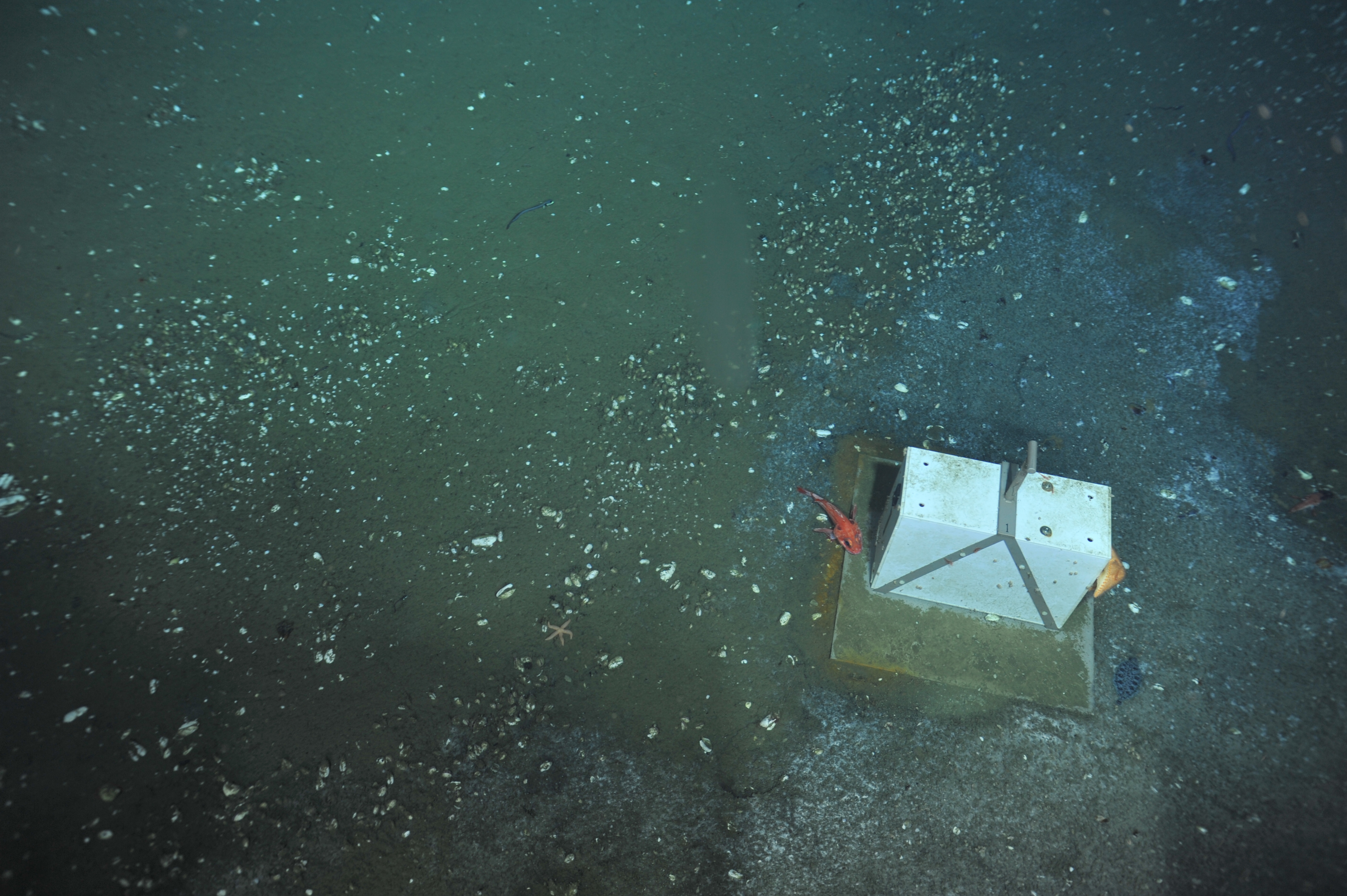

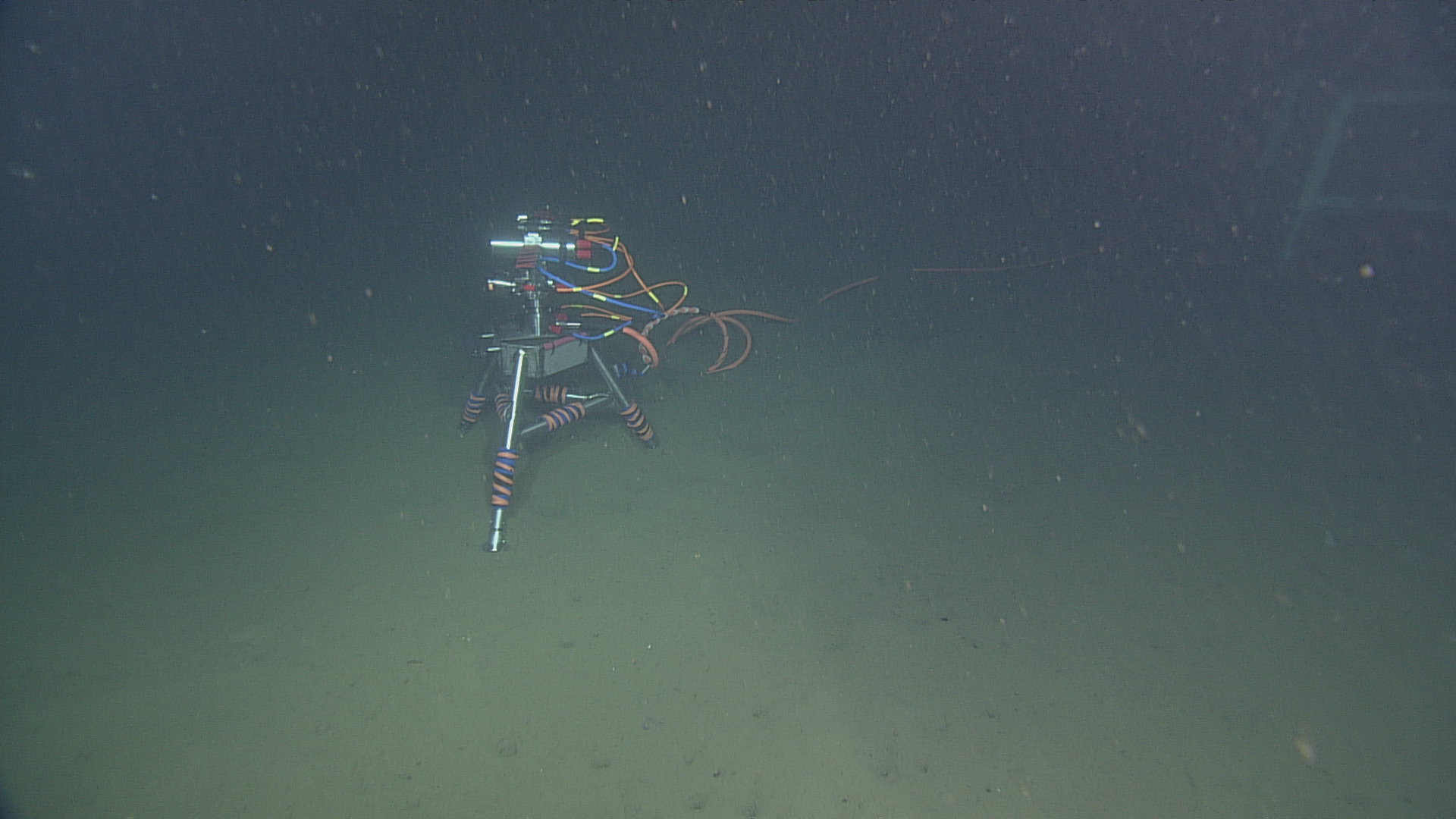



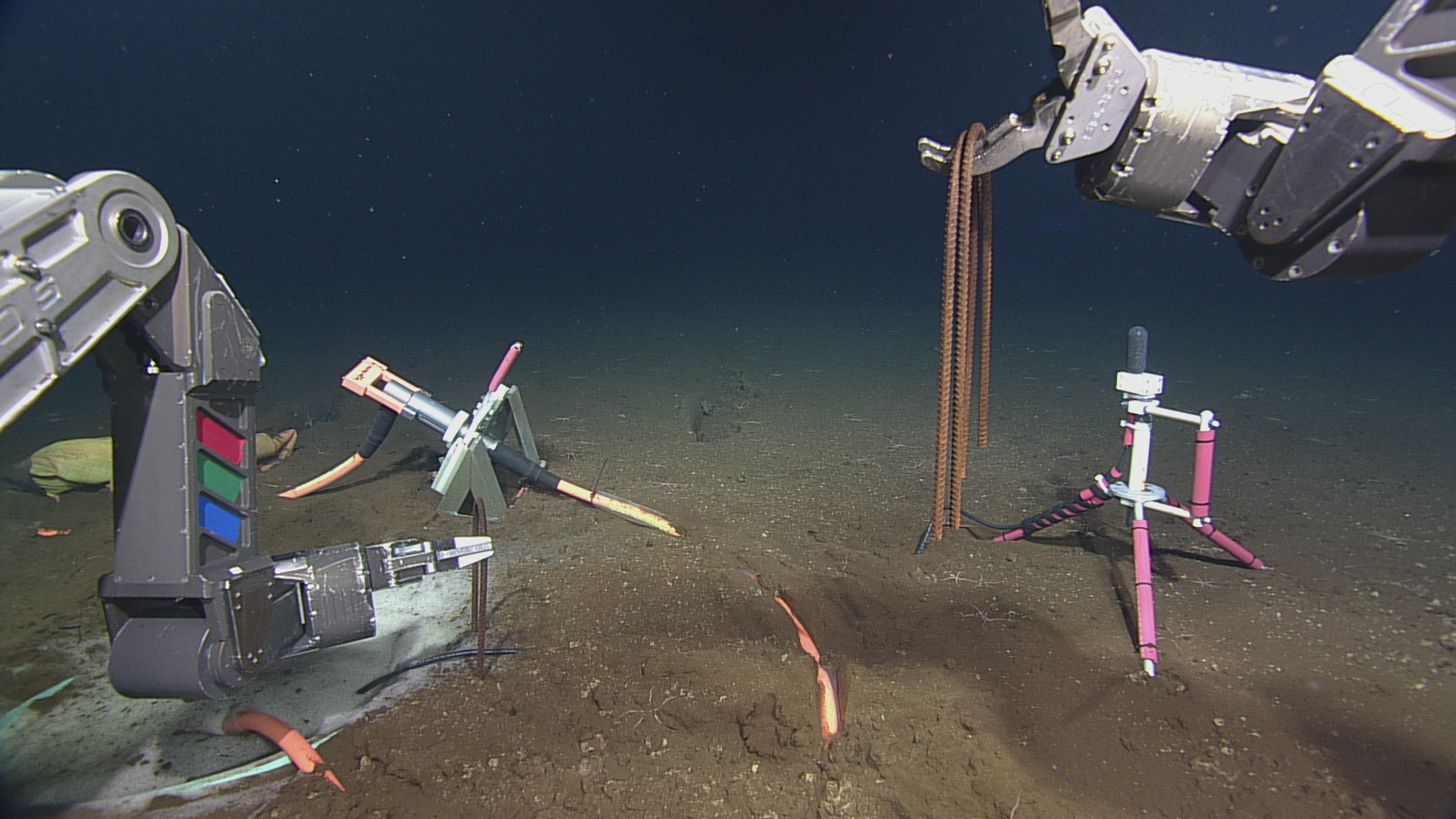

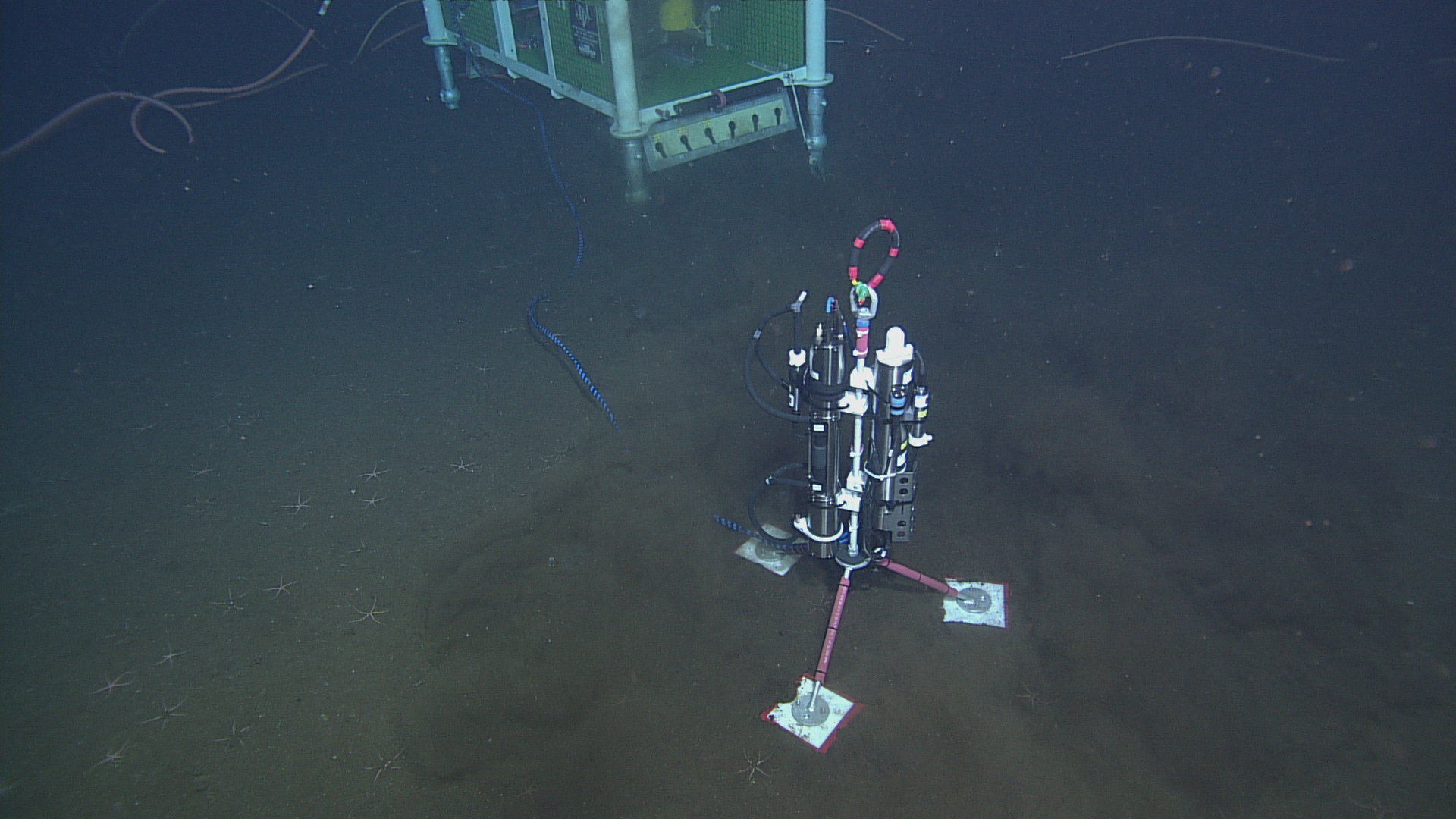
















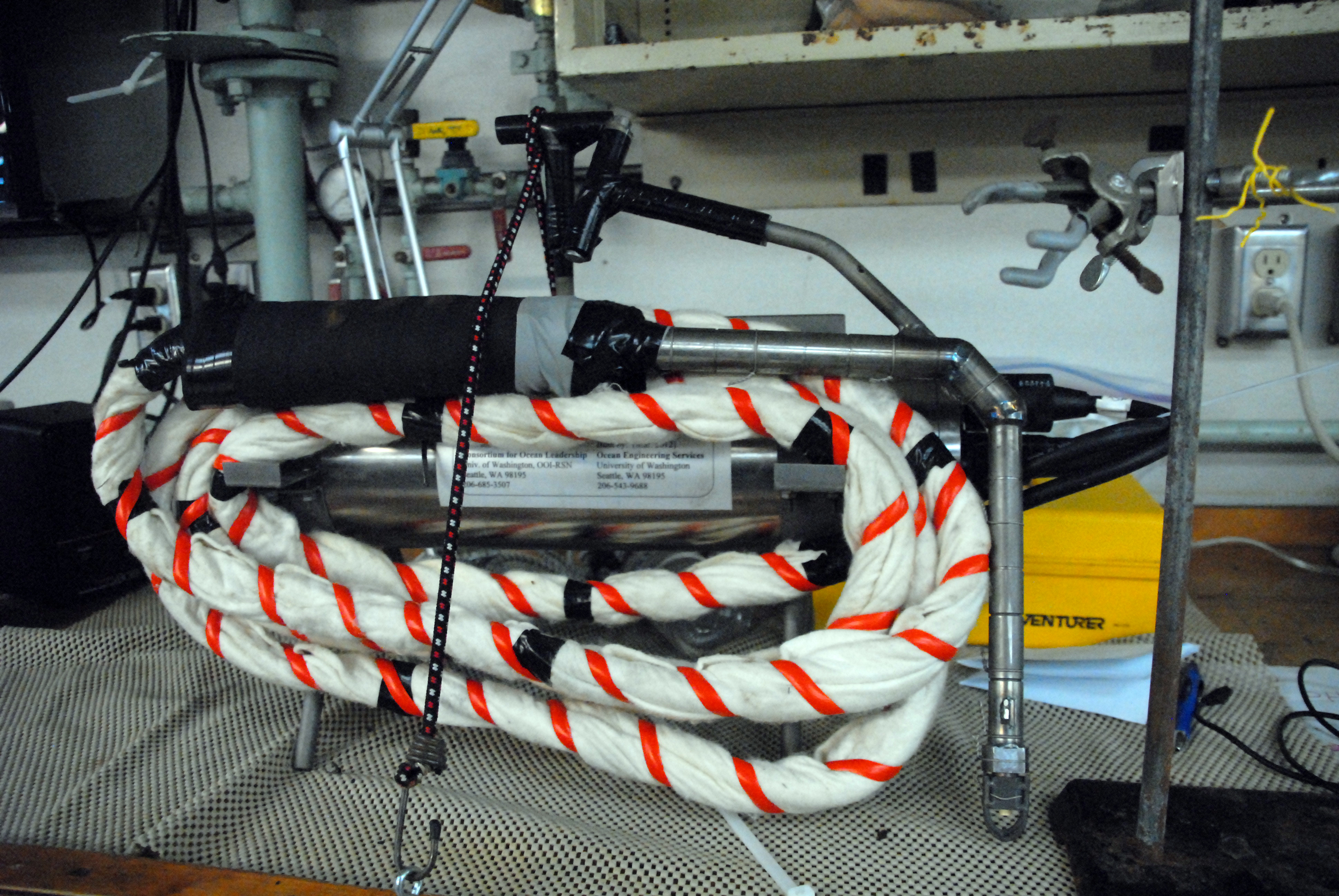

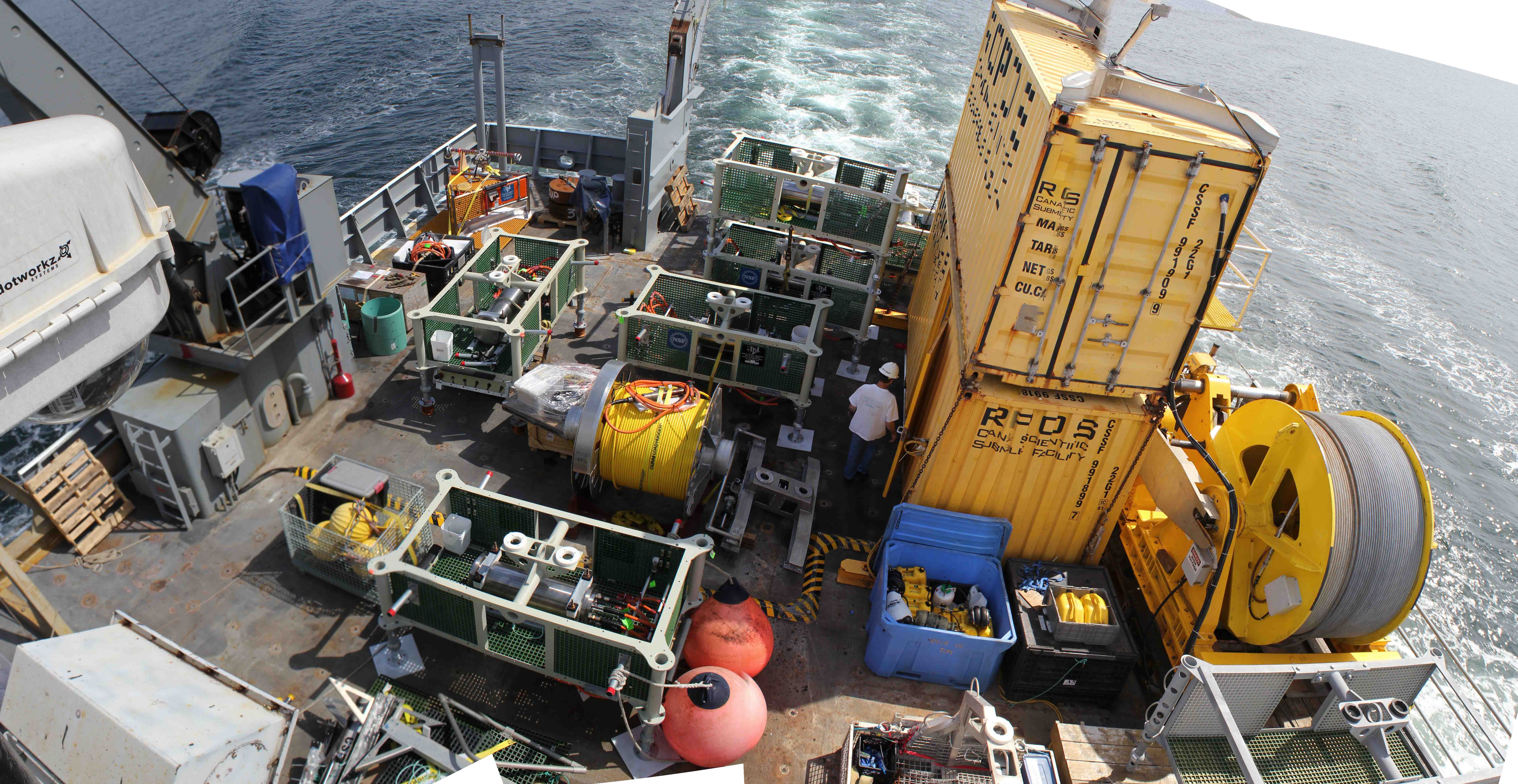

A CAT flow meter near Einstein's Grotto. It is home to a rockfish and sea star. Photo Credit: NSF-OOI/UW/CSSF, Dive R1750, V14

The hydrophone tripod connected to the BEP at the Endurance Oregon Offshore site. The hydrophone is an underwater microphone listening for marine mammal vocalizations, anthropogenic noise, and other acoustic signals. It is offset from the BEP site by ~10 meters to reduce background noise. Photo Credit: NSF-OOI/UW/CSSF, Dive 1747, V14

The digital still camera deployed the Oregon Offshore site (600 m). Photo Credit: UW/NSF-OOI/CSSF, ROPOS Dive 1747, V14.

The digital still camera in the ROPOS toolbasket during deployment at the Oregon Offshore site (600 m); the camera at is designed to look at the seafloor in general, observing animal activity, sediment transport, detritus falls, and bioturbation. Credit: UW/NSF-OOI/CSSF, Dive 1747, V14.

Removing the hydrophone tripod from the Benthic Experiment Package (BEP) during deployment at Oregon Offshore site (600 meters depth). The hydrophone was moved ~8 meters away to avoid picking up noise from the other sensors in the BEP. Credit: UW/NSF-OOI/CSSF, ROPOS Dive 1745, V14.

An action shot of the modified McLane Deep Profiler at the Axial Base site crawling up the mooring wire. The yellow profiler vehicle climbs up and down the mooring wire between the seafloor and the top buoy, collecting oceanographic data on thin layers in the water column. Credit: UW/NSF-OOI/CSSF, Dive 1742, V14.

ROPOS uses rebar "staples" to secure the hydrophone cable into the seafloor at the Axial Base site. The hydrophone is mounted on the pink tripod on the right side of the frame. Photo Credit: NSF-OOI/UW/CSSF, Dive 1739, V14

ROPOS using a suction tube to vacuum out the caisson for the broadband seismometer at Axial Base. Credit: UW/NSF-OOI/CSSF, ROPOS Dive 1739, V14

Tripod mounted CTD and optical attenuation sensors on the seafloor at the Axial Base site (2600m deep). Junction box LJ03A is visible in the background. Photo Credit: NSF-OOI/UW/CSSF, Dive 1739, V14

Removing the pins holding the descent weights onto the HPIES platform at Axial Base. Photo Credit: NSF-OOI/UW/CSSF, Dive 1739, V14

The HPIES (Horizontal Electrometer Pressure Inverted Echosounder) instrument on the seafloor at Axial Base site (2600m depth). Photo Credit: NSF-OOI/UW/CSSF, Dive 1739, V14

APL/RSN engineer Eric Boget gently lowers the deep profiler package into the water during the mooring deployment. Photo Credit: Ed McNichol, Mumbian Enterprises, Inc.

The deployment of the HPIES (Horizontal Electrometer Pressure Inverted Echosounder) instrument off the fantail of the Thompson at the Axial Base site. The instrument was designed to freefall to the seafloor from the surface, and did so successfully. Photo Credit: Ed McNichol, Mumbian Enterprises, Ltd.

The HPIES instrument is being lowered over the side of the R/V Thompson for installation at the base of Axial Seamount. The HPIES (Horizontal Electrometer Pressure Inverted Echosounder) measures the horizontal electrical field, the bottom pressure, and the acoustic travel time from the seafloor to the sea surface to characterize the properties of the water column.

A picture of the optical attenuation sensor attached to junction box LJ01A, prior to deployment at the Slope Base site. Photo Credit: Kendra Daly, USF

The conductivity, temperature, and depth (CTD) sensor attached to the side of LJ01A prior to deployment at the Slope Base site. Photo credit: Kendra Daly, USF

ROPOS lifting the broadband hydrophone mast on LJ01A into position. Photo Credit: NSF-OOI/UW/CSSF; Dive 1735; V14.

A McLane wire-following profiler, modified to add inductive charging and communications, and holding a CTD, dissolved oxygen, fluorometer and 3D single point velocity sensors. Photo Credit: Kendra Daly, USF

During ROPOS Dive R1729, a digital-still camera (left), a mass spectrometer (middle) and a fluid- and microbial-DNA sampler (right) were installed in the International District Hydrothermal Field at the vent called El Gordo. A titanium 'hat' rests on top of the structure in a tubeworm and limpet patch. Inside the hat are temperature probes and intake nozzles for the fluid and DNA sampler. Credit: UW/NSF-OOI/CSSF; ROPOS Dive R1729; V14.

The integrated team of UW School of Oceanography Science (Giora Proskurowski), APL- Engineering (Dana Manalang and Trina Litchendorf), and undergraduate student (Christina Ramirez) help ready the digital-still camera for installation in the International District Hydrothermal Field. Photo Credit, Mitch Elend, University of Washington; V14.

The broadband seismometer (left) and low frequency hydrophone (right) are installed on the floor of Axial Seamount at the Central Caldera Site. The 7-function manipulator of ROPOS is connecting the extension cable to the medium powered junction box. The white bags inssulate the broadband from acoustic "noise" associated with curents flowing over the instrument.

A current meter is held in the manipulator of the ROV ROPOS for installation at the International District 2 Site. Photo credit: NSF-OOI/UW/CSSF; Dive 1723; V14.

A low-frequency hydrophone (black tubular-shaped instrument in tripod with red legs), connected to a broadband seismometer, awaits installation by the ROPOS that will install this sensor in the International District 2 Site. Pea gravel bags in the background will be piled over the broadband to dampen any noise by local currents. Credit: Mitch Elend, University of Washington, V14.

A bottom pressure-tilt instrument is installed at the summit of Axial Seamount in the International District hydrothermal field. This instrument measures the rise and fall of the seafloor due to melt migration in the subsurface. Currently, the seafloor is rising and this is believed to reflect the influx of magma into the core of the volcano.The instrument rests on a frozen lava flow - called a sheet flow. The small black marble in the yellow plate at the instrument base indicates that the platform it level. Photo credit: NSF-OOI/UW/CSSF; Dive R1723; V14.

A bottom pressure-tilt instrument is installed at the Eastern Caldera Site on the summit of Axial Seamount. Image Credit: VISIONS'13, UW/OOI/CSSF; Dive R1617; V13.

A temperature-resistivity instrument (analogue for chlorinity) is ready for installation in the International Vent Field at Axial Seamount during Leg 1 of the VISIONS'14 expedition. Photo Credit: Don Setiawan, University of Washington, V14.

A broadband seismometer and hydrophone are rigged for installation at the summit of Axial Seamount during VISIONS'14. University of Washington, V14.

Panoramic view of the R/V Thompson fantail as it departs for Axial Seamount on the VISIONS'14 OOI expedition. Green-sided frames are junction boxes that will be installed at the volcano and they willl host myriad instruments. The central drum holds yellow extension cable that will connect one of the juction boxes to Primary Node 3B, providing power and bandwith to this subsea observatory. Photo credit: Skip Denny, University of Washington, V14
- Anemone
- Animal
- Arthropod
- ASHES
- Axial
- Axial Base
- Axial Biology
- Axial Caldera
- Bacteria
- Basalt Lava
- BEP
- Biofouling
- biolgoy
- Biology
- Camds
- Camera
- Camhd
- Central Caldera
- Ciliates
- Cnidaria
- Coastal Biology
- Crab
- Deep Profiler Mooring
- Dive Highlights
- Eastern Caldera
- Echinoderms
- Endurance Array
- Engineering Team
- ENLIGHTEN 10
- Exploratorium
- Fish
- Geology
- HD Camera
- HPIES
- Hydrate Ridge
- Hydrates
- Hydrophone
- Hydrothermal Vents
- Illustration
- Inshore 80 Meters
- Instrument
- International District
- J-BOX
- Jason
- Jellyfish
- Junction Box
- K12
- Lava
- Mollusk
- Moorings
- Nodes
- Nudibranch
- Octopus
- OOI
- Oregon Offshore
- Oregon Offshore 600 m
- Oregon Shelf
- Oregon Slope Base
- People
- PN1B
- PN1D
- Polychaetes
- PPSDN
- Primary Node
- RASFL
- ROCLS
- ROPOS
- ROPOS Dives
- ROV Team
- RV Revelle
- RV Sikuliaq
- RV Thompson
- Salp
- Sample
- SC13
- Science Team
- Sea Cucumber
- Sea Star
- Sea Urchin
- Seafloor
- Seismometer
- Sensors
- Shallow Profiler Mooring
- Shark
- Shipboard
- Shore Station
- Slope Base
- Smoker
- Soft Coral
- Southern Hydrate Ridge
- Sponge
- Squid
- Students
- Students & Guest Participants
- Tmpsf
- Tubeworms
- VISIONS 11 Leg 1
- VISIONS 11 Leg 2
- VISIONS 11 Viewers
- VISIONS 13
- VISIONS 14
- VISIONS 15
- VISIONS 16
- VISIONS 17
- VISIONS 18
- VISIONS 20
- VISIONS 22
- VISIONS 23
- Visualization
